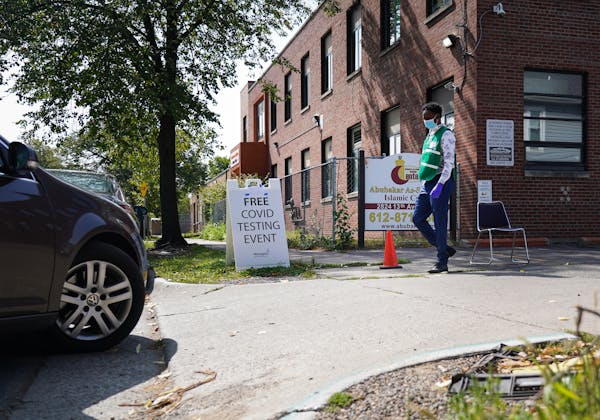A state Medicaid partnership seeks to get ahead of the COVID-19 pandemic by screening for people with clear risks and helping them reduce their odds of infection or severe illness.
Roughly 430,000 non-elderly adults in a state integrated health partnership program for poor and disabled people are screened for COVID-19 risks — from medical risks such as compromised immune systems to social risks such as crowded dwellings — and then receive support services from local medical providers.
"They can't always avoid exposure because of their housing conditions or other lack of opportunities in their communities, and we're really trying to get ahead of that, saying, 'Hey, we know you are at risk for a potentially serious outcome [from COVID-19]. How are you doing? What are some ways we can potentially keep you healthy?' " said Dr. Nathan Chomilo, Medicaid medical director for the state Department of Human Services.
The program emerged in response to disparities in the pandemic, which has caused 1,979 COVID-19 deaths and 91,422 infections with the novel coronavirus that causes the disease. The totals include 10 deaths and 513 infections reported Tuesday.
Chronic illnesses such as diabetes and heart disease are particular risks.
Among nearly 5,000 people hospitalized through midsummer with COVID-19, nearly 40% had diabetes or other metabolic diseases and 35% were obese, according to a state COVID-19 hospital outcomes database. Among 48 COVID-19 deaths involving people who were younger than 50, 80% involved racial or ethnic minorities and the majority listed chronic health problems as contributing factors, according to a review of state death records.
M Health Fairview has provided a community paramedic program of home visits and monitoring of vulnerable patients for years, and expanded it this spring to support patients identified by state screening as high risks for severe COVID-19.
Paramedics as usual check on patients' medications, home environments and nutrition levels and set up video visits with their doctors.
One goal is to help patients maintain the best health possible so they can fight off infection, while the other is to advise mask-wearing and other strategies to avoid infection in the first place, said Tracy Telander, M Health Fairview's system director of connected care.
Some patients have suffered anxiety being shut in during the pandemic, while others are in high-contact jobs and have questions about when to get tested and what symptoms should prompt a visit to the doctor.
"They really need the support and the health system to be able to meet them where they are at," she said.
Racial and ethnic disparities are notable in COVID-19 outcomes as well.
Minnesotans identified as Black, non-Hispanic make up 10% of the state's overall COVID-19 deaths of all ages and 19% of its lab-confirmed cases, even though they constitute 6% of the population.
In addition to the state Medicaid risk screening, a Mayo Clinic program is addressing this by partnering with leaders of different racial and ethnic communities in Minnesota to provide information on COVID-19 in mediums and messages they trust.
While some minority groups differed in the messages about COVID-19 that resonated, their elevated COVID-19 risks generally trace back to the same economic and social barriers, said Dr. Mark Wieland, a Mayo Clinic internal medicine physician.
"The commonalities of low economic status, poverty and so forth create many more similarities than culture creates differences," he said.
Low-income workers might work in service jobs that increase their infection risks but also live in high-density housing that increases the risk of spreading the virus to others. Job losses or furloughs also make it hard for others to afford food and stay healthy amid the pandemic.
Some of the recent growth in confirmed infections in Minnesota has involved children and young adults who returned to K-12 or college classes this fall, but health officials are concerned that they could carry the virus back to these vulnerable populations of older and at-risk adults.
One hopeful sign in the pandemic is that the state's positivity rate of diagnostic testing has dropped to 4.4%.
On the other hand, more than 36% of confirmed infections are coming from unknown sources in communities, meaning the virus is spreading beyond the state's ability to track it.
Hospitalizations had been declining, in part due to improved oxygen management and medication options, from a recent peak of 337 on Aug. 11. However, the number of hospitalizations has increased in each of the past three days to 290 on Tuesday — with 136 in intensive care because of breathing problems or other COVID-19 complications.
Chomilo said the hope is that screening of at-risk adults in the Medicaid program will have them better prepared if a new COVID-19 wave emerges.
"Public health is prevention, right?" he said. "It's trying to help them avoid being exposed to it in the first place. And if they do happen to get exposed, they have the resources to get timely testing and know where they can go for care."
Jeremy Olson • 612-673-7744

University of Minnesota police arrest 9 after pro-Palestinian encampment set up on campus
2 dead in Lino Lakes, no known threat to public, police say
Teen charged with murder in deadly St. Paul shooting last month

